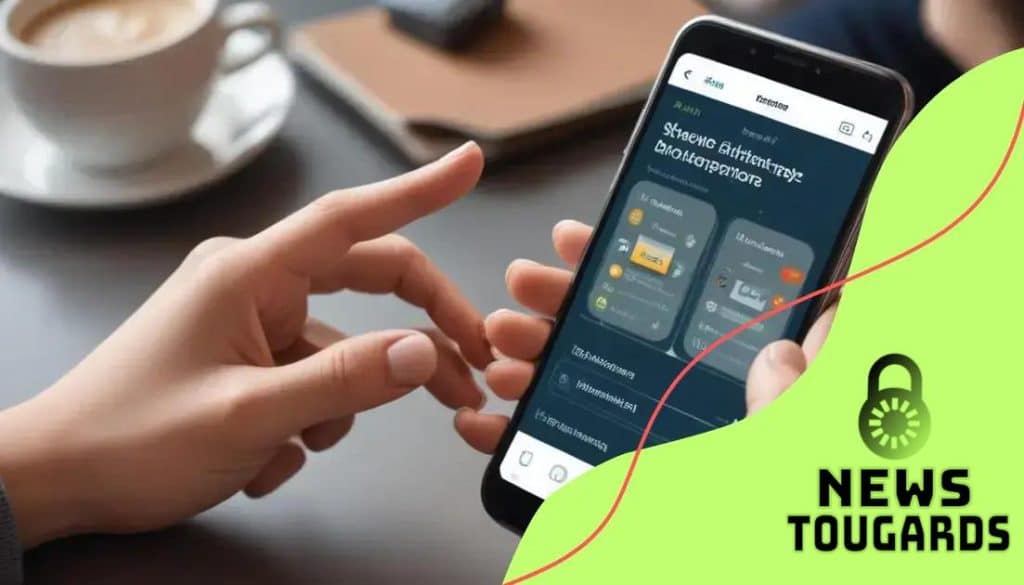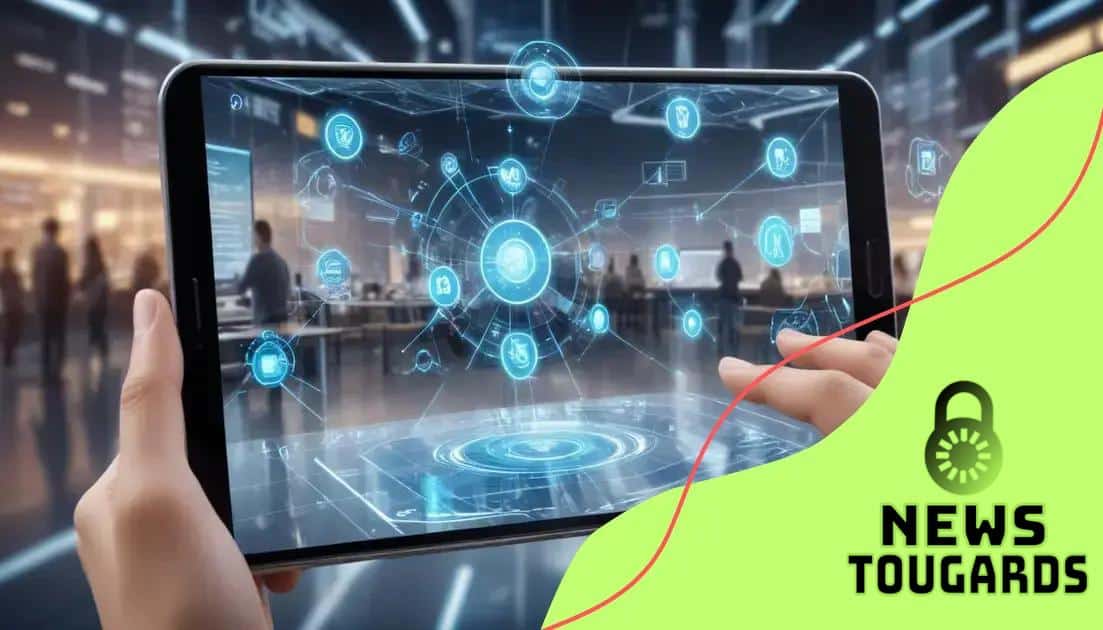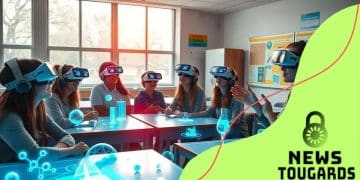Microlearning platforms: transform your training experience

In today’s fast-paced world, time is a precious commodity. Microlearning platforms are revolutionizing training by providing short, focused, and highly engaging content that can fit into even the busiest schedules.
Whether you’re learning a new skill or enhancing your knowledge, these platforms offer an efficient way to boost retention and improve engagement through adaptive learning, mobile accessibility, and immersive technologies like augmented reality.
If you’re ready to revolutionize your learning experience, let’s dive into how microlearning platforms can make a significant difference.
Understanding microlearning: what is it?
Microlearning is an innovative and highly effective approach to education that delivers content in small, focused segments.
Unlike traditional learning methods, which often require long sessions and extensive time commitments, microlearning platforms provide concise learning experiences that fit easily into our busy lives.
This approach is designed to offer quick, digestible lessons that enhance understanding and retention without overwhelming the learner.
With the growing demand for flexible learning options, microlearning platforms have become a key player in transforming the way individuals and organizations approach training.
What makes microlearning so effective is its ability to engage learners through bite-sized content, often delivered in just 5 to 10-minute segments.
These short learning bursts allow users to absorb key concepts and skills without feeling burdened by lengthy sessions.
Whether it’s a video, a quick quiz, or an interactive activity, microlearning platforms offer various ways to keep learners engaged and motivated to learn.
What Makes Microlearning Effective?
The effectiveness of microlearning platforms lies in their adaptability to different learning styles.
By offering content in multiple formats, these platforms enable learners to choose how they engage with the material, increasing both comprehension and retention. The diverse range of content formats includes:
- Short Videos: These provide visual learners with engaging content that presents information clearly and concisely. Videos are highly effective at breaking down complex concepts into easy-to-understand visuals.
- Interactive Quizzes: These quizzes promote active engagement by allowing learners to test their knowledge immediately after learning. Feedback helps reinforce key concepts and correct misunderstandings.
- Infographics: Visual aids that represent data or processes in a simplified, easy-to-digest format. Infographics cater to visual learners and are perfect for summarizing large amounts of information.
- Text-Based Lessons: For learners who prefer detailed explanations and written content, text-based lessons provide the depth necessary for comprehensive learning.
This ability to choose between different formats caters to diverse learning preferences, ensuring that each learner can absorb and retain the content in a way that suits them best.
This multi-format approach is one of the core strengths of microlearning platforms, allowing for personalized learning experiences that adapt to individual needs.
Key Characteristics of Microlearning
Microlearning platforms stand out from traditional educational methods due to several unique characteristics. Content is always focused on a specific topic, making each learning module clear and concise.
The small learning sessions, typically lasting only 5 to 10 minutes, are ideal for learners who don’t have large blocks of time to dedicate to education. This also makes it easier to incorporate learning into daily life without overwhelming the learner.
These platforms also provide on-demand access, allowing learners to engage with content whenever and wherever it’s most convenient for them.
Whether they’re on a break, commuting, or in between meetings, learners can easily access microlearning materials at their own pace.
Additionally, microlearning platforms often incorporate gamification and interactive elements to keep learners engaged.
These strategies make the learning process not only more enjoyable but also more effective, as learners are motivated to complete their modules and retain what they’ve learned.
The benefits of microlearning platforms
Microlearning platforms offer a range of significant benefits that transform both the teaching and learning experience.
By providing content in short, easily digestible bursts, these platforms cater to the fast-paced nature of modern life, making learning both accessible and effective.
This approach helps learners stay engaged while also improving retention, which is often a challenge with traditional learning methods.
One of the primary advantages of microlearning is its ability to save time without compromising on content quality.
With lessons typically lasting just 5 to 10 minutes, learners can fit training into their schedules without feeling overwhelmed.
Whether it’s a quick video or a short quiz, microlearning platforms allow learners to engage with material in bite-sized sessions that enhance focus and retention, providing an effective learning solution for today’s fast-moving world.
Flexibility and Accessibility
One of the standout benefits of microlearning platforms is their flexibility. These platforms provide learners the ability to access content anytime and from anywhere, fitting seamlessly into their everyday schedules.
Whether on a commute, during a lunch break, or between meetings, learners can easily engage with the material at their own pace and convenience.
This on-demand accessibility encourages more frequent learning sessions, which directly enhances knowledge retention.
Instead of dedicating long hours to a single session, learners can spread their learning over multiple short sessions, making it easier to retain information over time.
The flexibility of microlearning platforms also means that learners can use various devices, smartphones, tablets, or desktops, ensuring that education is always within reach, regardless of location.
Moreover, this convenience allows learners to engage with content in different environments, increasing their opportunity for learning without disrupting their daily routines.
This flexibility leads to improved time management, making it easier for learners to prioritize both professional and personal development.
Enhancing Retention Through Smaller Segments
Another key benefit of microlearning platforms is their ability to enhance knowledge retention by breaking content into small, focused segments.
Presenting information in bite-sized chunks allows learners to better absorb and remember the material. This approach is more effective than traditional, lengthy learning sessions, which can lead to information overload and decreased retention.
Microlearning platforms often incorporate several techniques to reinforce learning and retention. Short quizzes, for example, assess understanding and allow learners to apply what they’ve just learned, ensuring that key concepts stick.
Visual aids, such as diagrams and infographics, also play a crucial role in enhancing memory retention by providing visual representations of information, making it easier to recall.
Additionally, many platforms use gamification, incorporating elements like points, badges, or leaderboards, which not only keeps learners motivated but also adds a fun, engaging layer to the educational experience.
This combination of strategies ensures that microlearning platforms are not only efficient but also enjoyable.
The incorporation of interactive elements and varied content types maximizes the learning experience, ensuring that information is retained long after the lesson ends.
In summary, microlearning platforms offer a flexible, accessible, and highly effective solution for both individuals and organizations.
By delivering content in short, focused sessions, these platforms make learning more manageable, while also enhancing retention and engagement.
Whether you’re seeking to improve personal skills or enhance employee training, microlearning provides a convenient and powerful way to achieve educational goals.
Key Features to Look for in a Microlearning Platform

When choosing the right microlearning platform, it’s important to focus on features that will significantly enhance the learning experience.
With so many options available, understanding the key characteristics that contribute to effective learning is essential. Selecting a platform that meets your learning objectives will ensure a more engaging, efficient, and enjoyable experience.
The best microlearning platforms are designed with the learner in mind. They combine usability, varied content types, and powerful tracking tools to create a seamless and enriching learning journey.
Let’s dive into the core features to look for when evaluating a microlearning platform.
User-Friendly Interface
The foundation of a great microlearning platform is its user-friendly interface. A clean, intuitive design is essential to ensure learners can easily navigate the platform and access the content they need without frustration.
The design should allow for quick access to lessons and minimize any obstacles that could distract or confuse learners.
Key aspects of a user-friendly interface include:
- Easy Course Navigation: The platform should allow learners to locate courses or modules with ease. An organized menu structure and clear categorization of content will streamline the user experience.
- Clear Labeling of Content: Course titles, lesson names, and buttons should be clearly labeled, providing a smooth journey from one module to the next. This ensures that learners spend more time engaging with the material and less time searching for the right content.
- Responsive Design: With mobile learning on the rise, a microlearning platform must be optimized for use across devices. Whether accessed via desktop, tablet, or smartphone, the platform should provide a seamless experience, making learning accessible anywhere, anytime.
These elements collectively ensure that the learner’s journey is simple and frustration-free, allowing them to focus on mastering the material rather than navigating the platform.
Variety of Content Types
A diverse range of content types is crucial for maintaining engagement and catering to various learning preferences. Microlearning platforms that offer a variety of formats can better support the needs of visual, auditory, and kinesthetic learners.
This diversity in content types promotes deeper understanding and makes the learning process more dynamic and enjoyable.
Some key content formats to look for include:
- Videos and Animations: These are excellent for visual learners, helping to break down complex topics into engaging, easy-to-understand visual formats.
- Interactive Quizzes: Quizzes encourage active learning and provide instant feedback, reinforcing key concepts and allowing learners to assess their understanding immediately.
- Infographics and Charts: These are great tools for simplifying large amounts of information into digestible visuals that learners can quickly grasp.
The ability to choose the format that resonates with the learner’s preferred style ensures higher engagement and greater retention of the material.
Tracking and Analytics
Analytics are a crucial feature of any microlearning platform, allowing instructors and administrators to monitor learner progress, identify strengths and weaknesses, and make data-driven decisions.
A good platform should have built-in tracking tools to provide insights into the effectiveness of the learning experience.
Some important analytics features to consider are:
- Progress Tracking for Individual Users: This feature allows instructors to monitor how each learner is progressing through the course. It provides insights into completed modules, time spent on lessons, and overall engagement levels.
- Completion Rates for Courses: Tracking the completion rates for courses or modules gives instructors a clear picture of learner engagement. Low completion rates can indicate areas where the content may need to be adjusted or where learners may need additional support.
- Results from Assessments and Quizzes: By tracking quiz scores and assessment results, instructors can identify areas where learners may be struggling and offer targeted interventions. This feedback loop enhances the learning experience and helps improve overall course outcomes.
These analytics tools allow instructors to tailor the content to better meet learner needs, ensuring that the microlearning platform is not just effective but also continuously improving.
In summary, when evaluating a microlearning platform, look for a user-friendly interface, a variety of content formats, and powerful tracking and analytics features.
These elements will create a platform that not only engages learners but also provides valuable insights into their progress, ultimately enhancing the learning experience and making it more effective.
A microlearning platform that offers these key features will ensure that both learners and organizations get the most out of their educational investments.
How to implement microlearning in your organization

Online education
Implementing microlearning in your organization can significantly enhance employee training and development.
By breaking down complex topics into bite-sized, easily digestible lessons, microlearning platforms offer a flexible and efficient way to improve skills and knowledge retention.
However, to maximize its impact, it’s essential to approach the implementation process thoughtfully.
The key to successful microlearning implementation is aligning the platform with your organization’s specific learning goals and objectives.
Whether you’re introducing microlearning for the first time or integrating it with existing training methods, following a structured approach ensures that the platform meets the needs of your learners and contributes to business success.
Assess Your Training Needs
The first step in implementing microlearning is assessing your organization’s training needs. Understanding which skills need development is critical to creating an effective microlearning program.
To do this, consider gathering insights from various sources such as performance reviews, employee feedback, and skills assessments. This will help you identify areas where microlearning can be most beneficial.
Additionally, understanding the existing gaps in knowledge will enable you to tailor microlearning modules to address specific needs, making the content relevant and focused.
This targeted approach will not only increase engagement but also ensure that training directly contributes to the growth and development of your workforce.
Create Engaging and Relevant Content
Once you’ve assessed your training needs, it’s time to focus on creating content that resonates with your learners.
Microlearning platforms thrive on short, impactful lessons, so each module should be concise and designed to meet specific learning objectives.
Whether through video, quizzes, or interactive activities, the content should be engaging and tailored to the learner’s preferences.
The content should be designed in a way that encourages active participation, with opportunities for employees to apply the knowledge immediately.
By making the content interactive, using storytelling or real-world examples, you can increase its relevance and help learners connect the material to their daily tasks.
Select the Right Microlearning Platform
Choosing the right microlearning platform is a crucial step in ensuring the success of your training program. Look for a platform that offers a user-friendly interface, a variety of content formats, and strong tracking capabilities.
It’s essential that the platform integrates well with your organization’s existing tools and systems, so that employees can easily access learning materials on various devices, whenever needed.
Consider features like mobile compatibility, the ability to track learner progress, and customizable content creation tools.
A good microlearning platform should also support flexibility, enabling employees to access materials in their preferred format, whether it’s a quick video, interactive quiz, or a short text-based lesson.
Encourage Continuous Feedback and Improvement
As you implement microlearning, it’s important to gather continuous feedback from employees to refine and improve the learning experience.
Surveys, informal check-ins, and performance metrics will provide valuable insights into how the platform is working and whether it’s meeting learners’ needs.
Regularly reviewing the effectiveness of the content and the platform itself ensures that the learning experience remains relevant and engaging.
Adjusting the content based on feedback allows for continuous improvement, ensuring that your microlearning program remains effective over time.
Evaluating the effectiveness of microlearning
Evaluating the effectiveness of microlearning is essential to ensure that training programs meet organizational goals and deliver tangible results.
Without clear measures of success, it’s difficult to understand whether the content is engaging learners, improving skills, or contributing to overall performance.
By systematically assessing your microlearning programs, organizations can make the necessary adjustments and improvements to ensure continuous growth and success.
To effectively evaluate microlearning, it’s crucial to utilize both quantitative and qualitative measures. This process involves defining clear objectives, analyzing data from the platform, and gathering feedback directly from learners.
These insights will help refine the content and delivery, ensuring that microlearning remains aligned with both learner needs and business objectives.
Setting Clear Objectives
The foundation of effective evaluation is setting clear, measurable objectives for your microlearning programs. Defining what success looks like is the first step in the process, as it provides a roadmap for both learners and instructors.
Goals should be designed to be specific, measurable, attainable, relevant, and time-bound (SMART).
For example, instead of a vague objective like “improve product knowledge,” a more specific goal could be “Increase product knowledge by 30% as measured by quiz scores within 3 months.”
These kinds of clear, defined goals help track progress and allow organizations to evaluate whether the training is meeting its intended outcomes.
Setting well-defined objectives also allows for easier measurement of whether the microlearning platform is addressing the most critical skills and knowledge gaps.
Using Data Analytics to Track Progress
Microlearning platforms often come equipped with powerful analytics tools to track learner progress.
These tools play a crucial role in evaluating the effectiveness of training, providing valuable insights into how well learners are engaging with the content. Key metrics that help assess progress include:
- Completion Rates: Tracking how many learners complete courses or modules indicates both engagement and content effectiveness. High completion rates generally suggest that the content resonates well with learners and encourages them to follow through.
- Assessment Scores: Evaluating quiz and test scores helps determine if learners are absorbing the material. A high score indicates that the training content is being understood, while a low score suggests areas where the content may need improvement.
- Time Spent on Learning Activities: Monitoring how much time learners spend on various activities within the platform can provide insight into their level of engagement and whether the lessons are being completed thoroughly.
By regularly reviewing these metrics, organizations can identify patterns in learner behavior and content effectiveness.
Data-driven insights will enable instructors to adjust the learning experience, ensuring that microlearning continues to meet the needs of both individual learners and the organization as a whole.
Gathering Feedback from Learners
While data analytics offer quantitative insights, learner feedback provides qualitative input that is just as valuable in evaluating the effectiveness of microlearning platforms.
Gathering feedback from learners can help determine how engaging and useful they find the content.
Direct feedback through surveys, interviews, or focus groups allows organizations to identify pain points and areas of improvement from the learner’s perspective.
Some important questions to ask learners include:
- How engaging did you find the content?
- Did the training meet your expectations and needs?
- How relevant was the information to your daily tasks or job performance?
Incorporating this feedback into your evaluation process ensures that the microlearning content is continuously refined to better suit learner preferences and organizational goals.
Feedback also helps assess whether the format (video, quizzes, text, etc.) resonates with learners and if the pacing of the content is appropriate for effective learning.
Continuous Evaluation for Improvement
The key to maximizing the effectiveness of microlearning is regular evaluation. It’s not a one-time process but an ongoing cycle of gathering data, analyzing performance, and collecting learner feedback.
By continuously assessing the effectiveness of microlearning strategies, organizations can adapt the learning experience to better meet changing needs and improve long-term results.
Future trends in microlearning technology

The future of microlearning technology holds immense potential for further enhancing educational experiences.
As technology continues to evolve, microlearning platforms will integrate new tools and strategies to make learning even more engaging, effective, and accessible.
With advancements in adaptive learning, immersive technologies, and mobile-first design, the landscape of microlearning is set to become more personalized and interactive, providing learners with a dynamic and enriching experience.
As organizations increasingly turn to digital solutions for training, these emerging trends will play a key role in shaping the future of microlearning. Let’s explore the exciting advancements on the horizon.
Adaptive Learning Systems
One of the most significant trends in microlearning technology is the rise of adaptive learning systems. These systems are designed to customize the learning experience for each user based on their individual performance and progress.
As learners engage with the content, the system adjusts the difficulty, pacing, and types of material presented, ensuring that each learner receives relevant content tailored to their unique needs.
By providing personalized learning pathways, adaptive learning helps maintain engagement while optimizing the learning process.
For instance, if a learner struggles with a particular concept, the system may offer additional support or simpler explanations before advancing to more complex material.
This personalized approach makes microlearning more efficient and ensures that learners are continually challenged at the right level, improving overall retention and skill development.
Augmented and Virtual Reality (AR & VR)
Augmented reality (AR) and virtual reality (VR) are poised to transform the world of microlearning by creating immersive, interactive learning environments.
These technologies enable learners to practice skills and gain knowledge in settings that closely resemble real-world scenarios.
The integration of AR and VR into microlearning platforms can provide highly engaging, hands-on experiences that traditional methods simply cannot replicate.
For example, learners can use VR to experience a simulated environment where they can practice a skill, such as assembling machinery or navigating complex situations, in a safe, controlled space.
AR can overlay digital information onto the physical world, offering real-time feedback and interactive tutorials.
These technologies not only make learning more exciting but also improve knowledge application in the real world, enhancing long-term retention and preparing learners for real-life tasks.
As these technologies become more accessible and affordable, they will likely become integral to microlearning platforms, allowing organizations to offer highly engaging and practical training solutions.
Mobile-First Design
With the growing reliance on smartphones and tablets for daily tasks, mobile-first design has become an essential feature of microlearning platforms.
Today’s learners expect to access content seamlessly across a variety of devices, and platforms must prioritize responsive design to accommodate this demand.
Microlearning is already well-suited for mobile use, given its short, bite-sized lessons, but the future will bring even more emphasis on mobile-optimized features.
Key features of mobile-first microlearning platforms include:
- User-friendly navigation: Designed for small screens, mobile-first platforms ensure that learners can easily navigate courses and access content with just a few taps.
- Offline access: The ability to download content for offline use ensures that learners can continue their education without needing a constant internet connection.
- Push notifications: To keep learners engaged and on track, mobile platforms will offer reminders and updates via push notifications, ensuring consistent learning progress.
By prioritizing mobile design, organizations can provide learners with the flexibility to engage in training whenever and wherever it suits them, fostering a culture of continuous, flexible learning.
Embracing Innovation in Microlearning
Looking forward, microlearning technology will continue to evolve, incorporating new trends and innovations that make learning more immersive, personalized, and accessible.
From adaptive learning systems that personalize content to AR and VR that enhance training, and mobile-first design for learning on the go, these innovations will make microlearning even more impactful.
As organizations embrace these advancements, they will be able to deliver training solutions that are not only more engaging but also more effective, ensuring that learners are equipped with the knowledge and skills they need to succeed in their roles.
By staying updated with these trends, organizations can ensure that their microlearning programs remain relevant, efficient, and engaging, contributing to a well-prepared workforce for the future.
Conclusion
In today’s fast-paced and ever-evolving world, microlearning platforms have emerged as a powerful tool for modern education and training.
By delivering content in short, focused segments, these platforms not only make learning more accessible but also significantly improve retention and engagement.
The ability to access bite-sized lessons anytime and anywhere provides immense flexibility, enabling learners to fit training into their busy schedules without feeling overwhelmed.
The integration of technologies like adaptive learning, augmented reality (AR), and mobile-first design boosts the effectiveness of microlearning platforms, keeping them at the forefront of education and professional development.
For organizations, adopting microlearning platforms is a smart way to drive continuous learning and development among employees.
Whether you’re aiming to improve specific skills or provide ongoing training, microlearning ensures that your workforce can learn efficiently without disrupting their daily tasks.
By leveraging the right platform, you can maximize the potential of these innovative solutions.
As you explore microlearning platforms, check out these valuable resources: Whatfix’s guide on microlearning platforms and Elucidat’s list of the best microlearning platforms.
These platforms not only offer detailed insights but also provide practical examples of how to integrate microlearning into your learning and development strategy effectively.
FAQ – Frequently Asked Questions About Microlearning Technology
What are the key benefits of microlearning?
Microlearning offers quick, focused content that enhances retention and is easy to access, making learning convenient for busy professionals.
How can augmented reality be used in microlearning?
Augmented reality can create immersive experiences, allowing learners to practice skills in realistic environments, which improves engagement and knowledge application.
What should organizations consider when selecting a microlearning platform?
Organizations should look for user-friendly interfaces, diverse content formats, robust analytics, and mobile compatibility to support various learning needs.
How can feedback from learners improve microlearning programs?
Collecting feedback helps identify areas for improvement in content and delivery, ensuring that programs stay relevant and effective for all learners.





